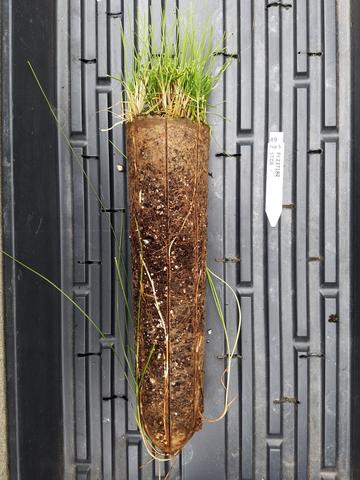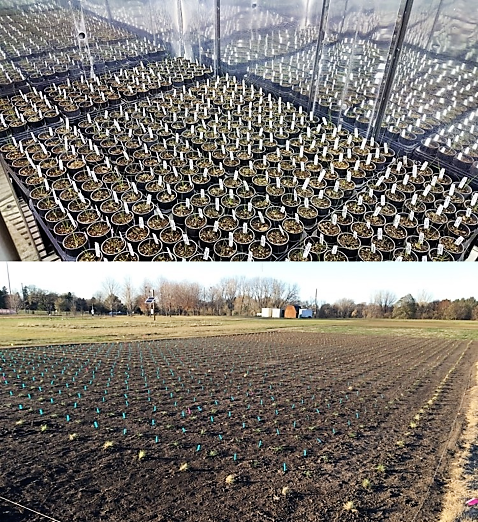By Nicole Mihelich
For my PhD, I am studying horizontal spread to improve fine fescue for use as sod. In my previous blog post (Assessment of rhizomatous growth in strong creeping red fescue for sustainable sod), I reported on the diversity of fine fescue horizontal spread of individual plants in a strictly controlled environment. For that experiment, tillers (aboveground stems) and rhizomes (belowground stems) were individually counted and characterized. While this small and controlled experiment shed light on the diversity of tiller and rhizome growth, it is not indicative of how these plants might look and vary in the field. Notably, growing plants in conetainers 2.5 inches wide and 8 inches deep causes major spatial constraints. This diameter limits the length of the experiment as the crown is confined in horizontal spread aboveground. Below the surface, rhizomes naturally want to grow horizontally underground, but 2.5-inch conetainers force them to grow downward, and they can even start growing out of the bottom (Figure 1).
This fall, I established a population of strong creeping red fescues in the field to capture horizontal spread in a more realistic environment (Figure 2, bottom). The larger-scale of the experiment also allows for a longer timeline (12 months vs 3 months) and more accessions (255 vs 96). Phenotyping will be similar to the growth chamber, but adjusted for the increased number and size of plants. Instead of counting individual tillers, aboveground horizontal spread will be determined by measuring the width of the crown.
Although individual plants will still grow differently than in a more crowded lawn/sod environment, spacing the plants and dissecting their individual growth habits will help us understand how they collectively contribute to the interlocking of sod. This investigation of traits in strong creeping red fescue will inform plant breeders in targeting traits to develop new cultivars with enhanced sod-forming ability. Improving fine fescues for sod production will help provide more low-input and sustainable sod choices to benefit both consumers and the environment.
This research is part of the “Filling a Critical Need: Diversifying Sod Production with Sustainable Turfgrasses” project in partnership with Purdue University, funded by the U.S. Department of Agriculture’s Agricultural Marketing Service under the Specialty Crop Multi-State Program.

